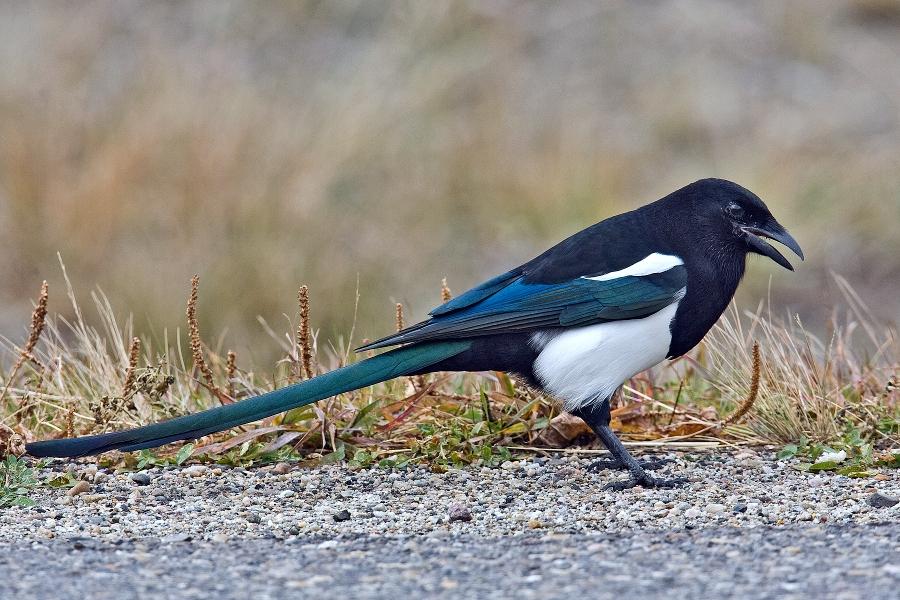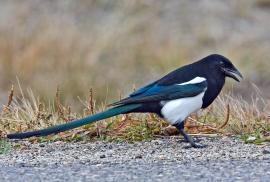Guide to Boreal Birds
Overview
Magpies generally nest individually but can sometimes be found in loose colonies; they are social when feeding or after the breeding season. Since the most important items in their diet seem to be insects and small rodents, they are more beneficial than destructive to agriculture. In captivity a magpie may be trained to imitate the human voice. These birds frequently associate with cattle and sheep, perching on their backs and picking off ticks and maggots. Those living in western rangeland appear shy of humans, but their behavior in the Old World is very different. In northern Finland magpies live in the middle of settlements and place their nests low.
Description
17 1/2 -22" (44-56 cm). Large black and white bird with long tail and dark bill. Bill, head, breast, and underparts black, with green iridescence on wings and tail. White belly and shoulders; white primaries conspicuous as white wing patches in flight. Formerly known as Black-billed Magpie.
Voice
A rapid, nasal mag? mag? mag? or yak yak yak.
Nesting
6-9 blotched greenish eggs in a neat cup nest within a large, bulky, domed structure of strong, often thorny twigs, with a double entrance, in a tree or bush.
Habitat
Open woodlands, savannas, brush-covered country, streamside growth.
Range/Migration
Resident from Alaska and western Canada south to east-central California and east to Great Plains. Also in Eurasia.



